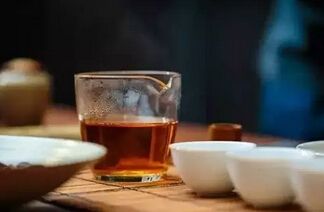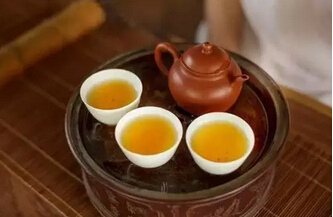When it comes to Kung Fu tea, many people think of Kung Fu black tea or Chaozhou Kung Fu tea, but few know why it's called Kung Fu tea. Is it because the tea variety is named Kung Fu? Today, let's explore what Kung Fu tea really is.
Generally, 'Kung Fu' refers to the time and effort spent on a task, as well as the meaning of being meticulous, refined, and讲究, or the mastery achieved in a certain field.

Black Tea - Kung Fu Tea
In the realm of black tea, Kung Fu tea is a type of refined black tea. Due to the extremely精细 processing during its initial and refined production, involving profound effort, it is called Kung Fu tea, or Kung Fu black tea.
During the Qing Dynasty, Kung Fu tea referred to black tea and some Wuyi rock teas. The Qing Dynasty monk Shi Chaoquan, a commoner who became a monk in the Wuyi Mountains in the 30th year of Kangxi's reign after the fall of the Ming Dynasty, wrote in his 'Wuyi Tea Song': 'Fragrant as plum blossoms and orchids, mostly roasted to bring out the aroma. The cauldron and炉火 are kept warm, with leisurely hearts and skillful hands, the Kung Fu is细.' This shows that the fine teas of Wuyi he saw were made with 'fine Kung Fu.' Here, 'Kung Fu' clearly refers to effort and time, later引申 as good tea produced with effort.
Liu Xun, a Qing Dynasty official who served as a magistrate in Chong'an County, Fujian, for three years during the 10th year of Yongzheng's reign, wrote in his 'Leisure Moments Collection': 'Wuyi tea is divided into two types. Among the rock teas, the highest quality is called old bush small leaf, followed by small leaf, then small leaf Kung Fu, then Kung Fu, then Kung Fu scented tea, then scented tea...' This indicates that over 200 years ago, 'Kung Fu' was already a name for tea, and a relatively precious one at that.
Wu Juenong, revered as the contemporary tea sage, also noted in his 'Selected Local Chronicles Tea Data of China' that both Wuyi rock tea and black tea had varieties referred to as Kung Fu tea.
After the Republic of China era, rock tea was no longer labeled as 'Kung Fu,' and 'Kung Fu tea' exclusively referred to black tea. For example, in Chen Zongmao's 'Chinese Tea Classic: Black Tea Chapter,' black tea is categorized into three types: small leaf black tea, Kung Fu black tea, and broken black tea. Kung Fu black tea includes Fujian Kung Fu, Qimen Kung Fu, Yihong Kung Fu, Dianhong Kung Fu, and others.

Chaozhou - Kung Fu Tea
Here, Kung Fu tea refers to a tea-brewing technique. It is called Kung Fu tea because the method is extremely讲究, requiring significant time, effort, and skill. This 'Kung Fu' pertains to the学问 of brewing and the art of savoring. In southern Fujian and Chaozhou, enjoying Kung Fu tea is a famous custom.
The earliest written record of Kung Fu tea consumption is found in the 'Customs' section of the 'Longxi County Annals' from the 27th year of Qianlong's reign (1762): 'Ling Mountain寺 tea is highly valued locally. Recently, people have been purchasing Wuyi tea from afar, arriving in five days, and then engaging in tea competitions. They must use Dabin's teapots, Ruochen's cups, Dazhuang's stoves, fans made of Guanxi蒲, and containers made of long bamboo baskets. In brewing tea, water is the foundation, supplemented by火候. The best water comes from the Sancha River, followed by Huiquan. Even in remote mountainous areas, many are devoted to this. The annual expense on tea amounts to thousands.' This short passage, detailing tea, utensils, water selection, and火候, closely resembles the Kung Fu tea practices of southern Fujian and eastern Guangdong.
The Kung Fu tea brewing method is a tea-drinking habit passed down among the people, embodying both a tea art and a folk custom. It integrates elements of spirit, etiquette, and brewing skills into a tea culture.